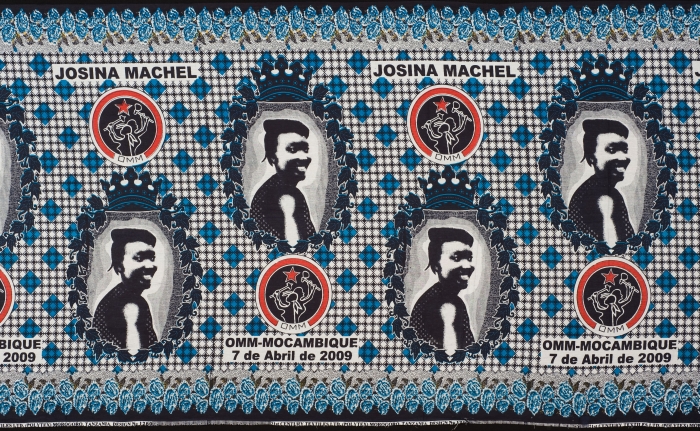
My Portuguese study challenge progresses well. This week, I wanted to motivate myself a bit further – so I learned more about countries where I’ll be able to speak Portuguese with confidence. And all those places are incredibly fascinating! Learn and go – you’ll be glad you did. Here are ten facts to get you packing.
1. The world’s best beach – and it’s official!
Tripadvisor reported it, so it must be true, right? Brazil – apart from having over 200 million people you can practice your Portuguese with – has the best beaches in the world. Look for Baia do Sancho – and if that doesn’t give your study a motivational kick, I don’t know what will. Maravilhosa!
2. In Mozambique, a woman worth remembering.
7 April is National Women’s Day in Mozambique. This Portuguese-speaking country still experiences growing pains – and for women, the hard times are sometimes even harder. The day is also the death anniversary of Josina Machel – possibly one of the most inspiring women you’ve never heard of.
Josina fought hard for the country’s independence and for the emancipation of women in Mozambique. She traveled up and down the country, enduring imprisonment and watching her family get jailed as well. She became a symbol for oppressed women, a fighter for independence and a worker for child care and education. She died of liver cancer – at the age of 25.
3. Are ghost animals for real? Go to Angola – you might see one.
The world thought that giant sable antelopes were dead, until they showed up again on a photo-trap in 2004. The animal was brought from the dead, but its status is still threatened.
For Angola (and for the antelopes as well, no doubt) it’s kind of a big deal. The antelope is the country’s symbol. It cannot be found anywhere else. And it epitomizes vivacity and speed – virtues which ensure it’s held in highest regard. This is a fascinating tale – when animals are “brought back” to life, and come to mean so much for a country.
4. What are garlic flowers good for? If you haven’t got a hammer in Porto…
This is a bizarre description of a very lively event. Every year in Porto a Festa de São João takes place. Streets are covered in bunting, shop windows display funny verse (exercise for tourists: read those and try to decipher what they mean), and good time is had by all.
Well, that’s not true it you’re a girl. You see, the custom on that day is to hit attractive women on the head with a garlic flower. Or a plastic hammer. Apparently, this is rooted in old courtship rituals. It makes you wonder how Portuguese men were ever allowed to procreate…Go and see the Festa, by all means, but how about not hitting anyone on the head with anything?
5. In Guinea-Bissau, a most influential style of music
There are some genres which you will forever associate with Portuguese-speaking countries. Fado comes to mind, samba a close second (check out my last week’s post for some concrete recommendations on Portuguese music to learn a language). But in Guinea-Bissau, a vocal-and-drum based genre called Gumbe managed to achieve something quite remarkable.
This is a style of music that seems to be native to this country. But its influences range far and wide: in the Bahamas, there’s a genre called goombay. In Jamaica, a type of a drum is called goombay as well. And at home, the music managed to bring people together, and to become a vehicle for ideas which contributed to this country’s liberation from the colonist rule.
6. How to learn endangered languages? Try East Timor for starters.
This is, linguistically, a dramatic and fascinating story. Portuguese is one of the official languages of this country, but it’s by far not the only game in town. Indeed, during the period when Indonesia occupied the territory, the use of Portuguese was banned.
Nowadays, there are many languages spoken in Timor-Leste. Six of them – Adabe, Habu, Kairui-Midiki, Maku’a, Naueti, and Waima’a – are officially recognized as endangered. For me, learning a popular language becomes even more meaningful if you can use it to get to the dying languages more easily. Perhaps one day I will do that with Portuguese?
7. From Equatorial Guinea, a master of taking it slow.
There were many things worth mentioning about this part of the world: Spanish, French and Portuguese are all official languages there – and its biggest island was described as “Formosa” (beautiful) by its discoverer. But there is one person who simply needs to be mentioned here.
Eric Moussambani was probably the most famous slow swimmer of the Sydney Olympics in 2000. He swam 100 metres slower than some people swam 200 metres. And he admitted that the last 15 metres were “very difficult” for him. This, however, made him instantly famous: the crowd cheered him on and he was the unexpected hero of the Games.
The moral? Take it slow. Whether it’s language learning, swimming or anything else 🙂
8. What is the most densely populated part of the world?
Try Macau. This is China’s Special Administrative Region where Portuguese is spoken. It is the only place in China where gambling is legal. And boy, is it crowded! There are over twenty thousand people trying to find space in every square kilometre of it.
Apart from this, the superlatives can be found elsewhere: one of the world’s richest cities, the biggest gambling centre of the globe…It’s interesting how many countries Portuguese would allow you to visit – and how diverse the regions are.
9. In Cape Verde, the best wave sailing and kiteboarding conditions
This archipelago is my idea of heaven. Seriously. Its food is simple and seafood-based. Its climate is gentle, and its music fascinating. And then there’s all the amazing things you can do with the wind and the waves.
A lot of this is due to one man. Josh Angulo was a master windsurfer, and he came to Cape Verde from Hawaii. He did a lot to promote this Portuguese-speaking paradise and now calls it home. As I wish I could, too 🙂
10. The smallest African country is also the smallest Portuguese-speaking country
Hey, small is beautiful, right? Here’s a good example. São Tomé and Príncipe tops the “smallest” list in two categories. Its neighbours from above the list – Equatorial Guinea – are not far behind.
There is a lot more to be excited about, however. You can practice your Portuguese here while you’re sampling local coffee and cocoa. These two crops were introduced in the 19th century, and are now significant exports of this island country.
The big question, then: where will you go next?
All in all, there are over 250 million people living in countries with Portuguese as an official language. These are big and small nations, with old or recent traditions – and many fascinating things to discover.
What else is there to know, folks? Care to share it with us?
(Photo credit: Tropenmuseum of the Royal Tropical Institute)




 My one-year adventure with studying Portuguese is becoming a more grown-up thing now: I need to fit language study around my work! Doing this requires good time management but also (crucially for polyglot wannabes) setting priorities. So how to get your foreign language habit alongside your busy life?
My one-year adventure with studying Portuguese is becoming a more grown-up thing now: I need to fit language study around my work! Doing this requires good time management but also (crucially for polyglot wannabes) setting priorities. So how to get your foreign language habit alongside your busy life? 



